It looks like a red river flowing through the jungle—and it has claws.
Every year on Christmas Island, millions of red crabs drop everything and start marching. They cover roads, climb walls, cross golf courses, and stop traffic in a wild, crawling frenzy toward the sea.
No one tells them when to go. No one could stop them if they tried. This is one of nature’s boldest migrations—chaotic, colorful, and completely unforgettable.
Want to know why the forest empties, the coast swarms, and the whole island seems to pulse with life? Let’s follow the crabs.
Crab Population Explosion

Imagine a sea of red as far as the eye can see. Christmas Island hosts an astonishing 50 million red crabs, each contributing to a vibrant, bustling ecosystem.
This mass of crustaceans is a testament to Nature’s incredible diversity. The sheer number of crabs plays a crucial role in maintaining the island’s ecological balance, from turning over soil to fostering the growth of native plants.
Despite their small size, these crabs hold immense ecological power, creating a dynamic environment that thrives on their presence. It’s a phenomenon that paints the island in shades of red every year.
Migration Triggered by Rain
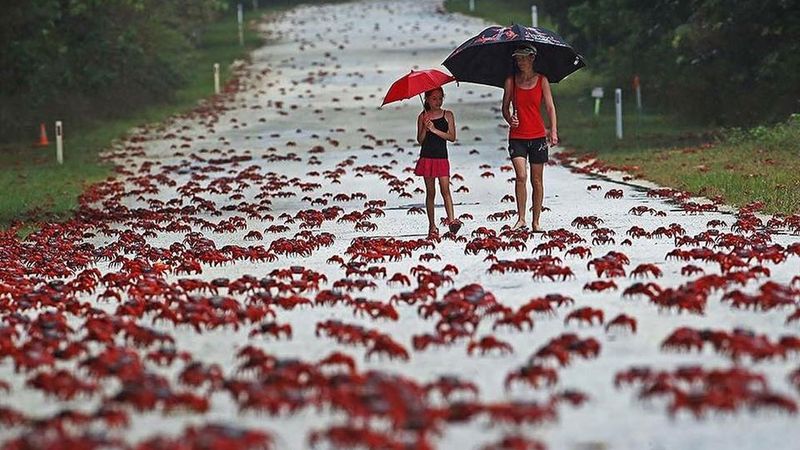
Rain, the essential catalyst for a red crab’s journey. As the first drops fall, a signal is sent, awakening an instinctual drive deep within these creatures.
The rain softens the ground and cools the environment, providing ideal conditions for their coastal migration. This annual pilgrimage is synchronized with the lunar cycle, adding another layer of complexity to their journey.
The combination of rain and moonlight guides millions of crabs toward the sea. It’s an awe-inspiring dance of nature, where timing is everything, and the rhythm of the rain dictates the crabs’ course.
Lunar Cycle Influence
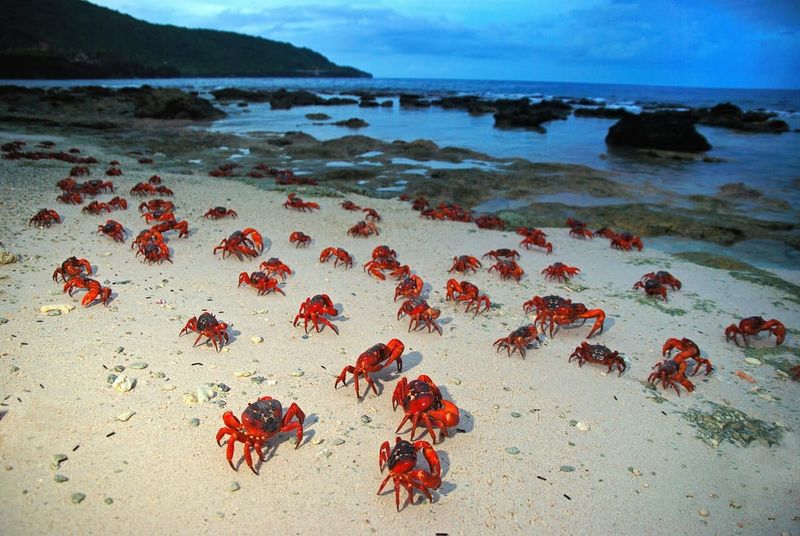
The moon plays a subtle yet significant role in the red crab’s migration. Its gravitational pull influences the tides and, in turn, the timing of the crabs’ movement.
The migration typically begins during the last quarter of the moon and peaks around the full moon. This celestial dance ensures that the crabs reach the ocean when tides are optimal for laying eggs.
By aligning their journey with the lunar cycle, red crabs increase their offspring’s chances of survival. The moon, a silent guardian, guides these crimson travelers on their relentless quest toward the sea.
Coastal Journey and Hazards
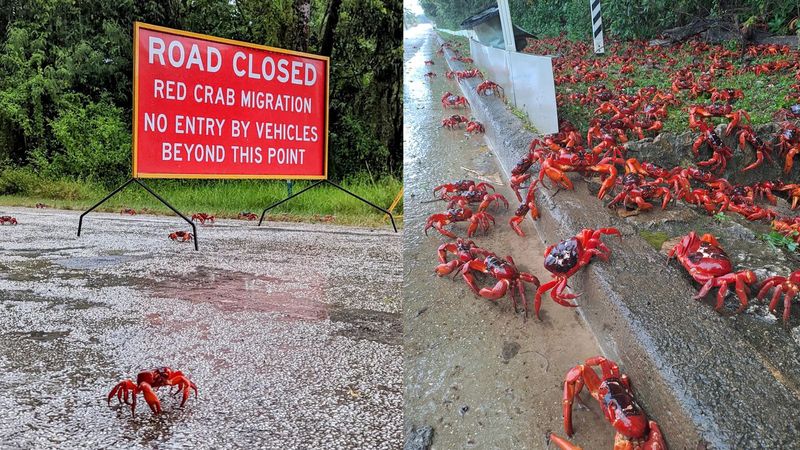
The journey to the coast is fraught with danger for the red crabs. As they move en masse, they must navigate roads, human infrastructure, and natural predators.
Christmas Island’s residents even close roads to protect these tiny travelers. Despite these challenges, the crabs press on, driven by an instinctual need to reach the sea. This perilous journey highlights their resilience and determination.
Every year, volunteers and locals join forces to ensure the crabs’ safe passage, showcasing a remarkable human-nature collaboration. These efforts are crucial in preserving the delicate balance of the island’s ecosystem.
Mating Dance and Ritual

On reaching the coast, the red crabs engage in a captivating mating dance. This ritual is a synchronized spectacle that mirrors waves of crimson sweeping across the shore.
Males and females pair up, creating a symphony of motion and color. The males dig burrows, and mating occurs underground, away from predatory eyes. This ritual lasts several days, after which the females return to the sea to release their eggs.
The mating dance is a testament to the crabs’ evolutionary drive, ensuring the continuation of their species through a carefully orchestrated sequence of events.
Egg Release and Ocean Journey

At dawn, as the horizon blushes with the first light, female red crabs release their eggs into the ocean. This moment marks the culmination of their arduous journey.
The eggs, numbering in the tens of thousands, are cast into the tides, embarking on their own voyage. The ocean cradles these nascent lives, nurturing them until they transform into tiny larvae. This oceanic phase is critical for the species’ survival, as it provides a nursery free from land predators.
The cycle of life continues, driven by the relentless rhythm of the tides and the crabs’ instinctual precision.
Juvenile Crabs’ Return
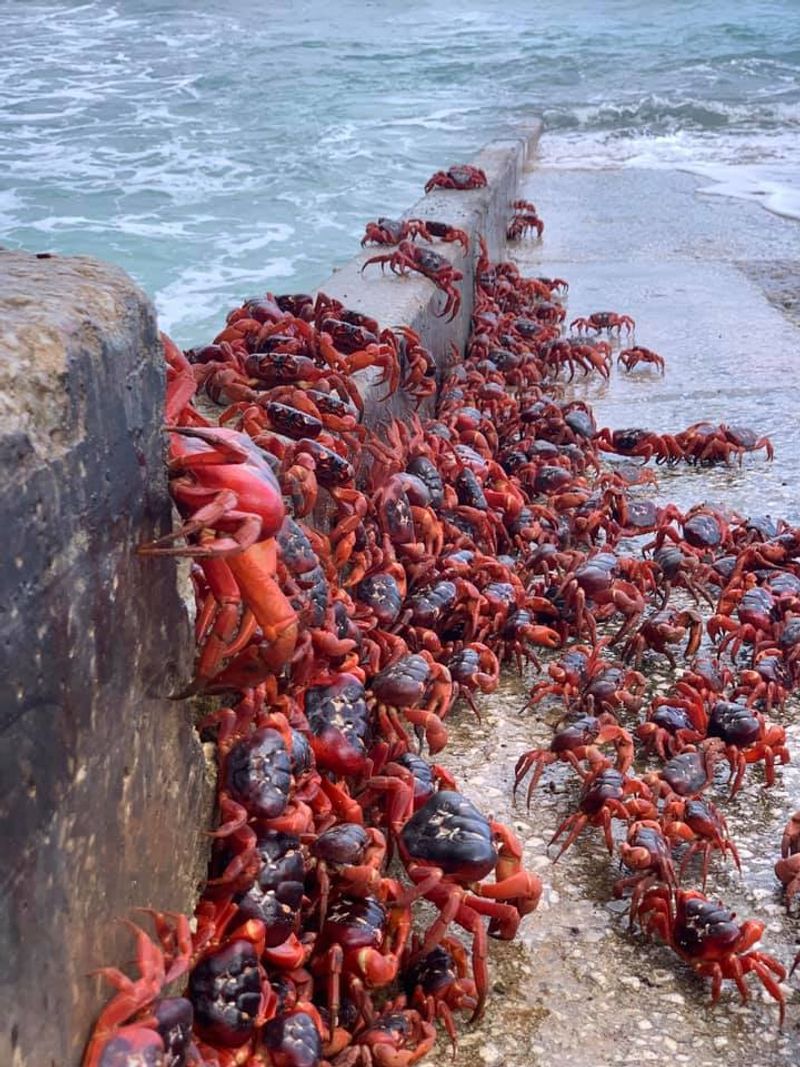
Weeks later, the ocean releases its precious cargo. Tiny juvenile crabs, no larger than a fingernail, make their triumphant return to Christmas Island.
This homecoming is perilous, as many fall prey to fish and seabirds. Yet, those who survive begin their gradual migration back to the forest. This return marks the next chapter in their life cycle, as they grow and mature within the island’s lush terrain.
The juveniles’ journey is a story of resilience and hope, a testament to life’s tenacity in the face of adversity. Each year, the island welcomes these tiny conquerors back to its shores.
Ecosystem Impact
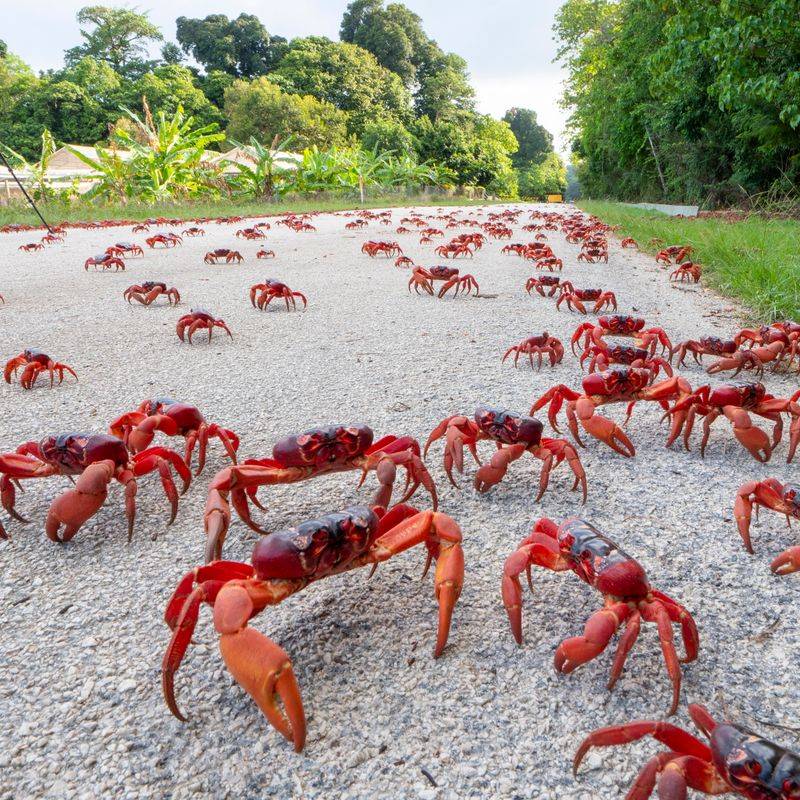
Red crabs are more than just island residents; they are ecosystem engineers. As they traverse the forest floor, they aerate the soil, facilitating plant growth and contributing to the island’s biodiversity.
Their presence deters invasive species and promotes the health of native plants. The crabs’ migration also redistributes nutrients throughout the ecosystem, enhancing the island’s overall vitality. This ecological role underscores their importance far beyond their numerical strength.
The forest flourishes under their care, creating a vibrant, dynamic environment that supports a wide array of life. Their influence is profound and irreplaceable.
Conservation Efforts
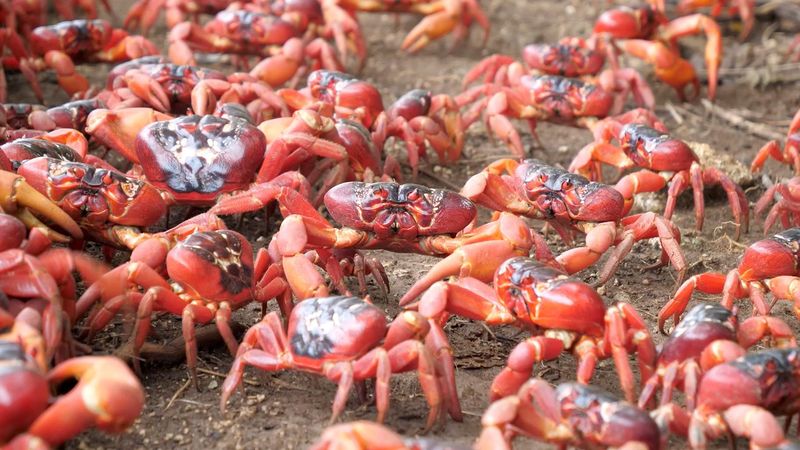
Conservation efforts on Christmas Island are paramount to the red crabs’ survival. Local authorities and volunteers work tirelessly to ensure the safe passage of these crustaceans.
Road closures, crab bridges, and awareness campaigns are implemented to minimize human impact. These initiatives highlight the island’s commitment to preserving this natural wonder. Conservationists continually study the crabs’ behavior to enhance protection strategies.
The collaborative efforts between humans and crabs exemplify a harmonious coexistence, where nature’s spectacle is cherished and respected. This preservation is vital for maintaining the ecological balance and the continuation of the red crab migration.
Red Crab as a Cultural Icon
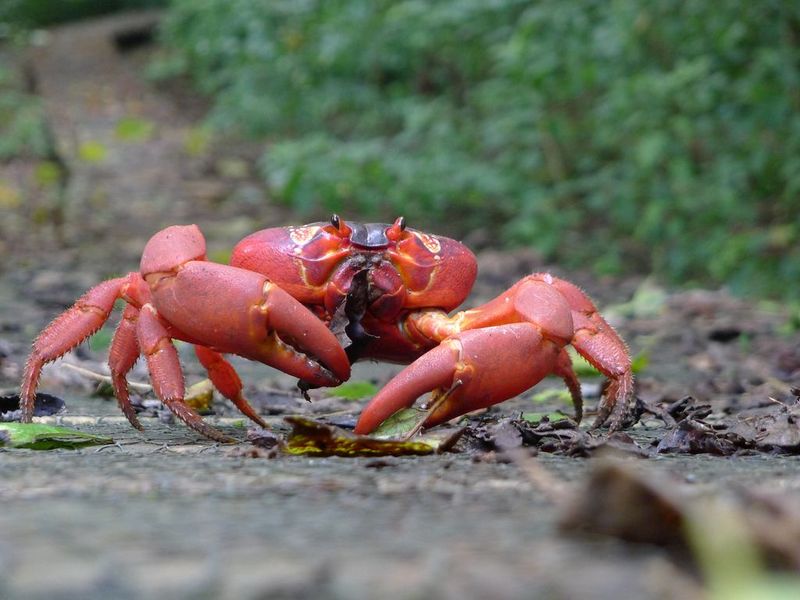
For the people of Christmas Island, the red crab is more than a natural marvel; it is a cultural icon. Festivals and celebrations revolve around their migration, instilling a sense of pride and identity among the island’s inhabitants.
Red crabs feature in local art, literature, and folklore, symbolizing resilience and the cyclical nature of life. This cultural connection fosters a deeper appreciation for the crabs and their annual journey.
The red crab’s migration is not just an event but a defining aspect of the island’s heritage, weaving together community, culture, and nature in a vibrant tapestry.

